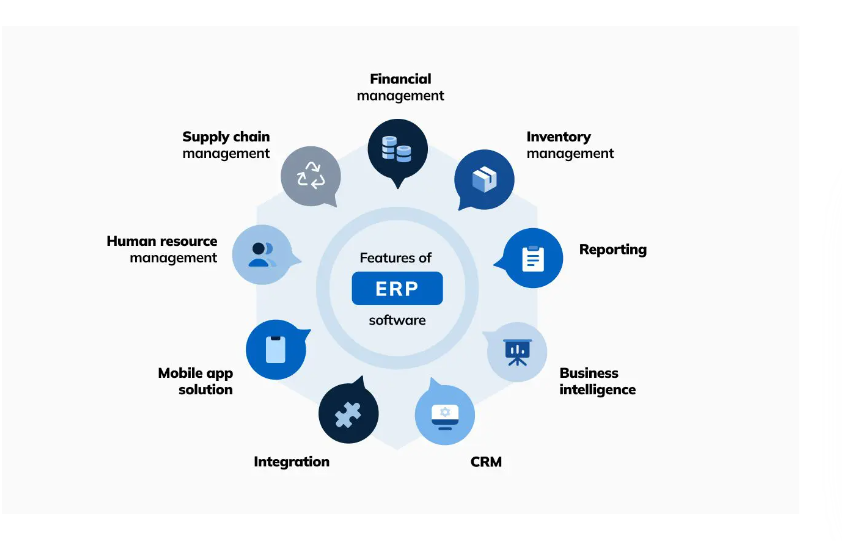Enterprise Resource Planning (ERP) software development is a complex and dynamic process, often involving large teams and intricate requirements. To address the challenges posed by ERP projects, many organizations are turning to Agile methodology. In this article, we will explore the benefits of implementing Agile in ERP software development and provide tips for a successful adoption.
Understanding Agile Methodology
Agile is a project management and software development approach that emphasizes collaboration, flexibility, and iterative progress. It encourages cross-functional teams to work together in short, time-boxed cycles known as sprints or iterations, where they deliver working increments of the software. Agile principles are outlined in the Agile Manifesto, which values individuals and interactions, working solutions, and customer collaboration over processes and tools.
Benefits of Agile in ERP Software Development
-
Adaptability: ERP projects often face evolving requirements and shifting business priorities. Agile's iterative approach allows teams to adapt to changes quickly, ensuring the ERP system remains aligned with business needs.
-
Faster Time-to-Market: Agile development produces working software in short cycles. This enables organizations to release valuable features and functionality to end-users sooner, accelerating time-to-market.
-
Enhanced Collaboration: Agile promotes close collaboration between development teams, stakeholders, and end-users throughout the project. This collaboration leads to better understanding of requirements and improved alignment with business goals.
-
Continuous Improvement: Regular retrospectives in Agile encourage teams to reflect on their processes and identify areas for improvement. This continuous improvement mindset leads to higher software quality and efficiency.
-
Reduced Risk: Agile's incremental delivery approach reduces the risk of large-scale project failures. Organizations can identify and address issues early in the development process, minimizing the impact on the overall project.
-
Customer-Centric Development: Agile prioritizes customer needs and feedback. This ensures that ERP software aligns with user expectations and delivers value to the organization.
Implementation Tips for Agile in ERP Software Development
-
Executive Buy-In: Secure support and commitment from senior executives and stakeholders. Their involvement and endorsement of Agile practices are essential for a successful transition.
-
Experienced Scrum Master: Appoint an experienced Scrum Master or Agile Coach who can guide the team in adopting Agile principles and practices effectively.
-
Cross-Functional Teams: Assemble cross-functional teams with members possessing diverse skills and expertise relevant to ERP development.
-
Clear Prioritization: Work closely with stakeholders to establish clear priorities for ERP features and functionality. This ensures that the most valuable items are addressed early in the project.
-
Iterative Development: Break the ERP project into small, manageable iterations or sprints, each focusing on specific features or modules.
-
Continuous Feedback: Maintain open lines of communication with end-users and stakeholders to gather feedback at each stage of development. Use this feedback to refine and improve the ERP system.
-
Regular Reviews: Conduct regular reviews and demos to showcase the progress of the ERP system to stakeholders. This transparency fosters trust and alignment.
-
Empower Teams: Give development teams the autonomy and responsibility to make decisions regarding how to achieve project goals within the Agile framework.
-
Collaborative Tools: Use collaborative tools and platforms for backlog management, sprint planning, and communication, which facilitate remote collaboration when necessary.
-
Training and Education: Provide training and education to team members and stakeholders on Agile principles and practices to ensure a common understanding.
-
Continuous Monitoring: Implement key performance indicators (KPIs) to measure the progress, quality, and value delivery of the ERP project. Adjust strategies based on data-driven insights.
Conclusion
Agile methodology is a powerful approach for ERP software development, offering flexibility, adaptability, and customer-centricity. Its iterative nature allows organizations to respond to changing business needs and deliver working solutions more efficiently. By embracing Agile principles and following implementation tips, businesses can streamline ERP projects, reduce risk, and ultimately achieve more successful and value-driven ERP implementations.



